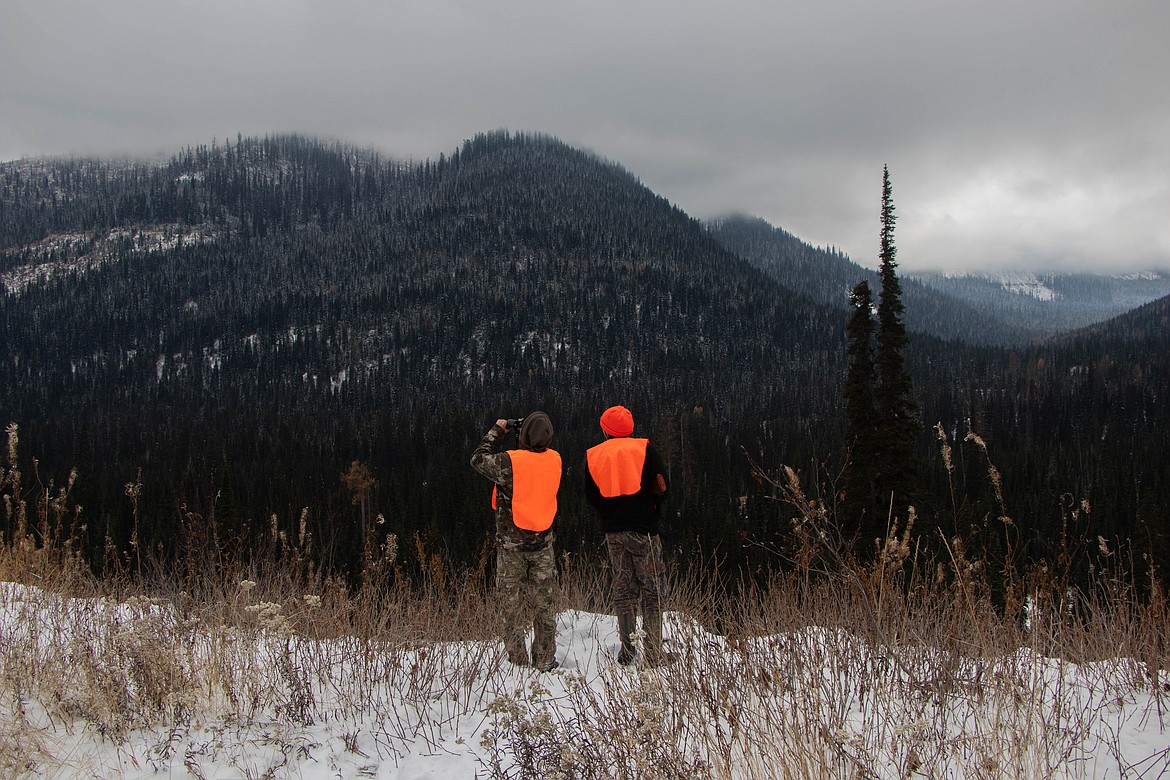Block Management continues slow decline despite increased payment cap
The number of acres enrolled in Block Management, a hunting access program managed by Montana Fish, Wildlife and Parks, has continued its gradual decline despite efforts to bolster landowner interest in the program.
Hunters have been tracking revisions to Block Management, hopeful that changes to the landowner reimbursement payment structure authorized by the last two Montana Legislatures can reverse flagging participation in the program and help alleviate concerns about crowding as sales of hunting licenses climb. As the last week of the general rifle hunting season approaches, Montana Free Press’ analysis of 2024 Block Management data finds that landowner participation in the program has continued its downward trajectory despite its popularity with hunters.
Block Management was developed nearly 40 years ago to help willing landowners manage hunting on their land, provide hunters with access to private and isolated public land, and help FWP better manage game species. It is often referred to as the state’s premier hunting access program.
The state Legislature established the program in 1985 and significantly expanded it a decade later. At peak participation, in 2002, 1,150 landowners provided hunters access to more than 8.8 million acres.
According to FWP data, the acreage enrolled in Block Management has continued its slow slide, even as the number of days that hunters spend pursuing game in Block Management areas continues to grow, contributing to the crowding issues some hunters have reported.
Last year, participating Block Management landowners logged 638,938 contracted hunter days, a 57% increase from 2013.
In 2021 and again in 2023, the Montana Legislature increased reimbursements in an attempt to reinvigorate landowner interest in Block Management, which could be flagging due to competition from private-sector alternatives. Such alternatives include platforms like LandTrust, a company founded in 2019 that facilitates payments between landowners and hunters, whether it’s $75 for a day of grouse hunting in the Clancy area or $200 for a day of bull elk hunting outside Roundup.
Matt Rinella, a Miles City-based rangeland ecologist, said he supports efforts to bolster public hunting access in response to hunting-oriented TV shows, podcasts and promotional real estate programming that have “commodified access.”
“If you’re a hunter, the hardest thing to get is not a good bow or a nice backpack — it’s access to land that holds game,” Rinella said. “The reason that access has declined and Block Management participation has declined is because the hunting industry and hunting celebrities have created a market for access. Block Management can’t compete with what people with deep pockets and outfitters are willing to pay.”
In 2021, Rinella and others founded Hunters for Access, with chapters in Montana, Minnesota and Kansas, to support public hunting initiatives. This year, the Montana group hosted nine work parties to help landowners who enroll their properties in Block Management with fence repair and construction projects.
In a similar vein, FWP launched the Thank a Landowner portal last year to collect and share hunters’ notes of appreciation with Block Management property owners. Last year, nearly 600 hunters submitted thank-you notes to landowners through the portal.
Other efforts to support the popular program are codified in Montana law. In 2021, state lawmakers raised the payment cap for landowners who participate in Block Management to $25,000. Two years later, the Legislature doubled that cap and increased the “hunter day rate.” Previously, a landowner could expect to receive $13 for each day a given hunter spent on his or her property. That rate, which is paid with FWP-administered hunting license sales and federal excise taxes, increased to $17 last year. (Note that landowner payments are established prior to the start of hunting season using a four-year average of recorded hunter days. Documented hunter days from the 2024 season will be incorporated in the 2025 agreements FWP enters into with participating landowners.)
Ed Beall, chair of the state’s Private Land/Public Wildlife Advisory Committee, told MTFP that landowners support the lifted cap. He said he’s eager to see data from the 2024 hunting season to better understand how landowners are thinking about Block Management now.
“There will be more data on that — we’re just concluding this year now,” he said.
As a result of the Legislature’s changes, Block Management’s financial footprint has nearly doubled in the past five years. This year, FWP is slated to pay a total of $12.3 million to the 1,316 landowners enrolled in the program.

